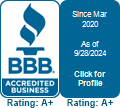
Exploring the 50/30/20 Budget Rule
In a world of personal finance, becoming proficient at budgeting is frequently the first step toward achieving financial stability. A well-organized budget acts like a financial GPS to achieving your goals and navigating life’s monetary challenges. Many spreadsheets, golden rules, and budgeting techniques exist, but the one that has gained significant popularity for its clarity and practicality is the 50/30/20 budget.
Let’s delve into the specifics of the 50/30/20 budgeting method and how it can pave the way toward financial success.
Understanding the 50/30/20 Budget Rule
The 50/30/20 budget rule is a method of budgeting that requires you to allocate your take-home pay, or after-tax income, into three main categories: 50% for needs, 30% for wants, and 20% for savings or debt repayment.
Senator Elizabeth Warren, a Harvard law professor, and her daughter Amelia Warren Tyagi popularized this method in their 2006 book- All Your Worth: The Ultimate Lifetime Money Plan. It aimed to serve as a general budgeting guideline for working-class families so they could prepare for future needs and unanticipated circumstances.
Below is a breakdown of each category:
Needs (50%)
It is the portion of your budget assigned for essentials. The things you must pay for to maintain a basic standard of living.
It includes:
- Mortgage or Rent
- Utilities
- Groceries
- Transportation
- Insurance and Healthcare
- Minimum Debt Payments and
- Other Necessary Expenses
Allocating 50% of your income towards needs ensures you cover essential expenses without overspending.
If you are on a tight budget, think about the following options to reduce your necessary expenses:
- Can you rent a room, move to a smaller home, or relocate to a less expensive area?
- Would it be more cost-effective to shop at a different supermarket?
- Can you carpool, use public transport, or drive less frequently to save money on petrol?
Wants (30%)
This category encompasses discretionary spending on non-essential items that enhance your quality of life.
It includes:
- Dining out
- Entertainment
- Shopping for clothes and accessories.
- Gym memberships
- Cable TV or streaming services
- Travel
- Furniture
- Electronics
- Hobbies, and
- Luxury purchases
While wants are not vital for survival, they contribute to your overall well-being and satisfaction. Limiting wants to 30% of your income encourages mindful spending and prevents splurging on unnecessary items.
Savings & Debt Repayment (20%)
The last category emphasizes establishing long-term financial security and stability. Allocate 20% of your income towards savings, investments, and debt repayment.
It includes:
- Contributing to an Emergency Fund
- Retirement Contributions (like 401(k) & Roth IRA)
- Investing in the Stock Market
- Making more than the required minimum payments on debt and
- Long-term Financial Goals (like homeownership, travel, or education)
Prioritizing savings and debt repayment ensures you are fully prepared for unexpected expenses and future financial goals.
Advantages of the 50/30/20 Budget Rule
There are several ways that the 50/30/20 budget can help people achieve financial prosperity. These recommendations may have the following advantages:
1. Simplicity of Usage
One of the advantages of the 50/30/20 budget is its simplicity. The rule provides an easy-to-understand and easy-to-implement budgetary framework. You do not have to perform complicated calculations to distribute your income. These guidelines are easy enough for even the least financially savvy person to follow.
2. More Balanced Money Management
You can manage your finances more effectively by allocating income across needs, wants, and savings. It ensures you have enough money for your essential expenses, you areactively saving for the future, and have money left over for discretionary spending. You can manage your money in a fun way while saving both for present and future needs.
3. Flexibility
While the budget provides clear guidelines, it also offers flexibility. Within each category, you have some scope to adjust your spending based on individual circumstances and financial goals, allowing for personalized financial management.
4. Target Driven
With 20% of your income dedicated to savings and debt repayment, the 50/30/20 budget prioritizes financial stability and future planning. It encourages consistent saving habits and helps you pay off debt, build wealth, and achieve long-term monetary goals. It also provides a safety net for unforeseen expenses and security for your family and yourself as you get closer to retirement, whether in the near or distant future.
Tips to Put the 50/30/20 Budget into Practice
There isn’t a single strategy for sticking to a budget that will suit everyone. However, these general guidelines for implementing a 50/30/20 budget apply to everyone.
1. Know What Your Income Is
Knowing what your income is forms the foundation of the 50/30/20 budget. Due to Federal Income Taxes, your take-home pay may be significantly lower than your gross income. Setting the correct budget amounts for the three categories will be easier for you to accomplish if you know what you make and what reaches your bank account each pay period.
2. Monitor Your Expenditure
Keeping a tab on your expenses for a few months will help you better understand your spending patterns. Analyze your spending by dividing it into needs, wants, and savings to see how well it follows the 50/30/20 breakdown. It will lay the foundation for an accurate estimate of your initial budgetary deviation. Additionally, tracking your spending is the only way to determine whether you are sticking to this budget. It is typically quite simple to accomplish with spreadsheet programs like Microsoft Excel.
3. Review And Adjust As Needed
While the 50/30/20 framework provides a solid foundation, do not hesitate to regularly review your budget to ensure it aligns with your current circumstances and adjust as necessary.
You must also review your budget to assess progress towards your financial goals and adjust your spending habits. For example, if you’re aggressively paying off debt, you may temporarily allocate more than 20% to debt repayment.
4. Automate Your Savings
By automating the process, it will be easier to save. Set up monthly automatic transfers to your savings or investment accounts to ensure you consistently allocate 20% of your income toward your financial goals. It ensures that your money grows gradually without the stress of the administrative work of managing your savings.
5. Stay Disciplined and Consistent
It takes discipline and consistency to implement the 50/30/20 budget guidelines. Stick to your spending plan, and do not go over your budget or deviate from your percentage allocations. Try to be consistent from one period to the next, and remember to reset your spending limits every month.
Also, avoid succumbing to impulse purchases or lifestyle inflation that could derail your budgeting efforts.
Bottom Line
Budgeting is a fundamental aspect of financial management, and the 50/30/20 budget offers a clear and practical framework for achieving monetary stability and success. By prioritizing needs, wants, and savings in a balanced manner, individuals can take control of their finances, make informed spending decisions, and work towards realizing their long-term financial aspirations. Embrace the simplicity and flexibility of the 50/30/20 budget, and embark on a journey towards a brighter future.


